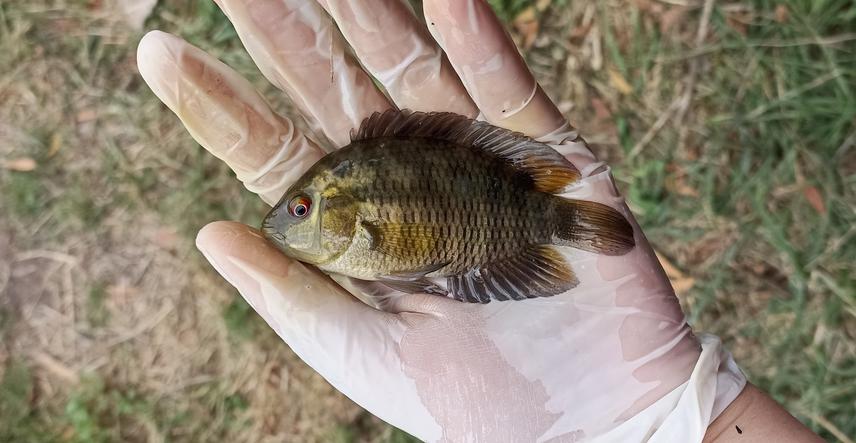Gaston Ezequiel Ojeda Rossi
Wetland ecosystems near urban and agricultural areas are often exposed to wastewater containing a mixture of pollutants, such as pesticides and pharmaceuticals and personal care products (PPCPs), among others. These contaminants can negatively affect ecosystems, even after undergoing water treatment. In particular, their impact on native species remains largely unknown, as most studies focus on model organisms that do not represent local fauna.

Australoheros facetus captured in Corrientes Creek during a sampling campaign. © Gastón E. Ojeda Rossi.
The aim of this project is to monitor the health status of a native fish species in water bodies of the Austral Pampas and to characterize pollution levels in several regional creeks. We propose the use of non-invasive techniques to characterize the health status of the Australoheros facetus in waterbodies with different anthropic sources of pollution (urban or agricultural). We will measure physicochemical characteristics of the water (temperature, pH, dissolved oxygen, among others) and indicators of human impact (PPCPs residues).
This information will support the development of conservation strategies for the entire fish assemblage in the region. To ensure the sustainability of the project, we will provide training to technicians from the environmental and conservation departments of each participating municipality, aiming to establish a long-term fish health monitoring program.